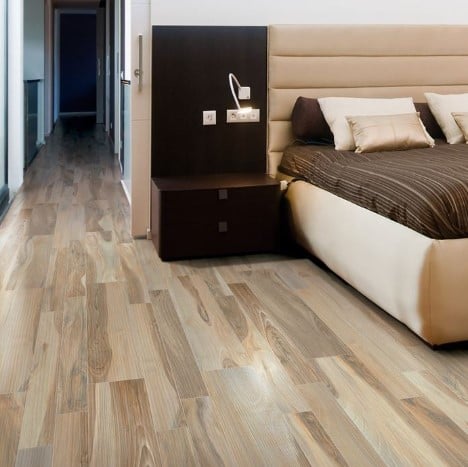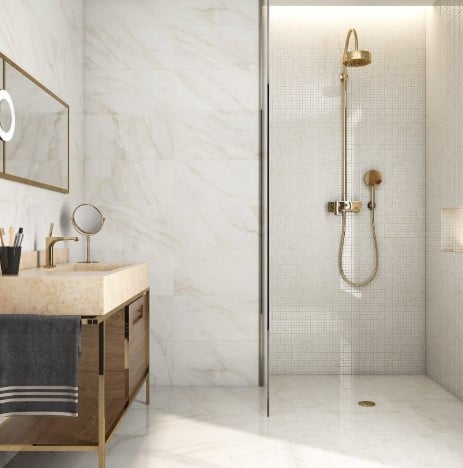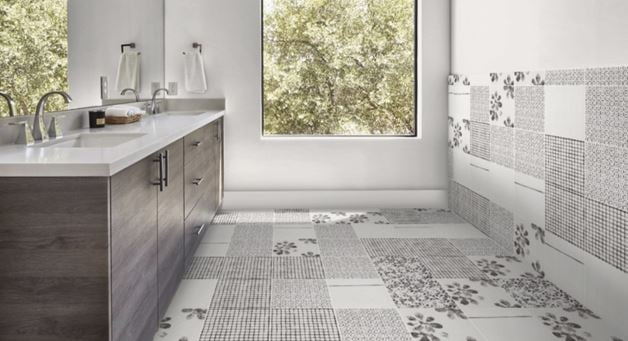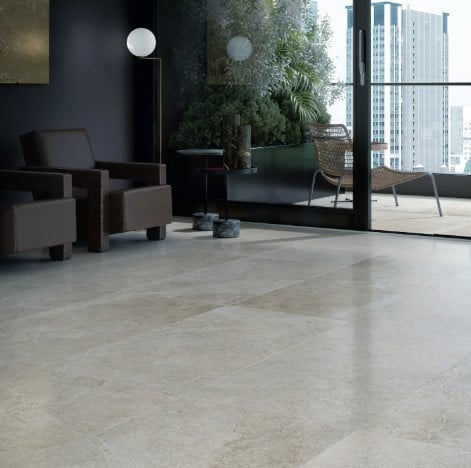
If you’re shopping for porcelain tile for your next home project, you’re likely aware of the huge variety of tile colors, patterns and styles that this category includes. From wood-look floors to gorgeous decorative designs and porcelain that looks like marble, porcelain tile encompasses a vast range of looks that are as practical as they are stunning.
Beautiful, versatile and highly water-resistant, porcelain tile is incredibly popular for good reasons. But you may be wondering about the different types of porcelain and what they mean. We often hear, “What’s the difference between color body porcelain tile and through body porcelain tile?” To answer that, here’s a quick guide to these two common porcelain types to help you decide which one is right for your home.

What Is Porcelain?
First, let’s clarify what porcelain tile is exactly. Porcelain is made from a refined clay mixture that’s fired in a kiln at very high temperatures, creating a tile that’s denser and more durable than ceramic tile. Its low porosity makes it resistant to water and stains, and its dense composition makes it very durable and resistant to scratching and chipping.
To learn more about ceramic tile and how it’s different from porcelain, check out our recent blog post on the topic.
What Is Glazed Porcelain Tile?
Some porcelain tiles are made of glazed porcelain, in which the color or pattern of the tile is only present in the glaze that’s applied on the surface. With this type of tile, beautiful patterns can be created. However, since the inside color of the porcelain does not match the surface pattern and though very unlikely to occur, a chip in the tile will be more visible compared to color body or through body tiles.

What Is Color Body Porcelain Tile?
A technically advanced version of glazed porcelain, color body porcelain is created by coloring the body of the tile with the surface glaze’s most predominate pigment. In other words, the tile will have a texture or decorative pattern on the surface just like a standard glazed tile, while the body (also called the “bisque”) is a solid color.
For example, Chymia Mix 2 White is a color body porcelain tile that’s mostly white in color with black decorative patterns. If a Chymia tile is chipped, the surface pattern would be interrupted but the exposed porcelain would still be a similar color (in this case, white) in order to minimize the visibility of the chip.

What Is Through Body Porcelain Tile?
Through body porcelain is slightly different than color body. In a tile made of through body porcelain, the colors and pattern are consistent between the surface and body of the tile. This type of tile has no surface glaze—it’s just the same pigments through the whole body.
For instance, Unica is a through body tile which has a varied surface pattern resembling stone. When chipped, the body of this tile would match the surface, including the color variations and pattern.
Generally speaking, if you’re concerned about your new porcelain tile being chipped—if it’s a high-traffic area, for example—then through-body porcelain tile may be your best option because it hides imperfections well. However, through body porcelain does have its limitations and is generally only found in solid colors or simple, consistent patterns. But it is also important to note that porcelain is very unlikely to chip, in general, but it will occasionally occur if the quality of the installation is of a lower quality standard.
See what brand new color body porcelain or through body porcelain tile would look like in your home or business with the Just Imagine Visualizer from Arizona Tile or stop into one of many showroom and warehouse locations today.





